Your cart is currently empty!
Ancient beauty brows to die for
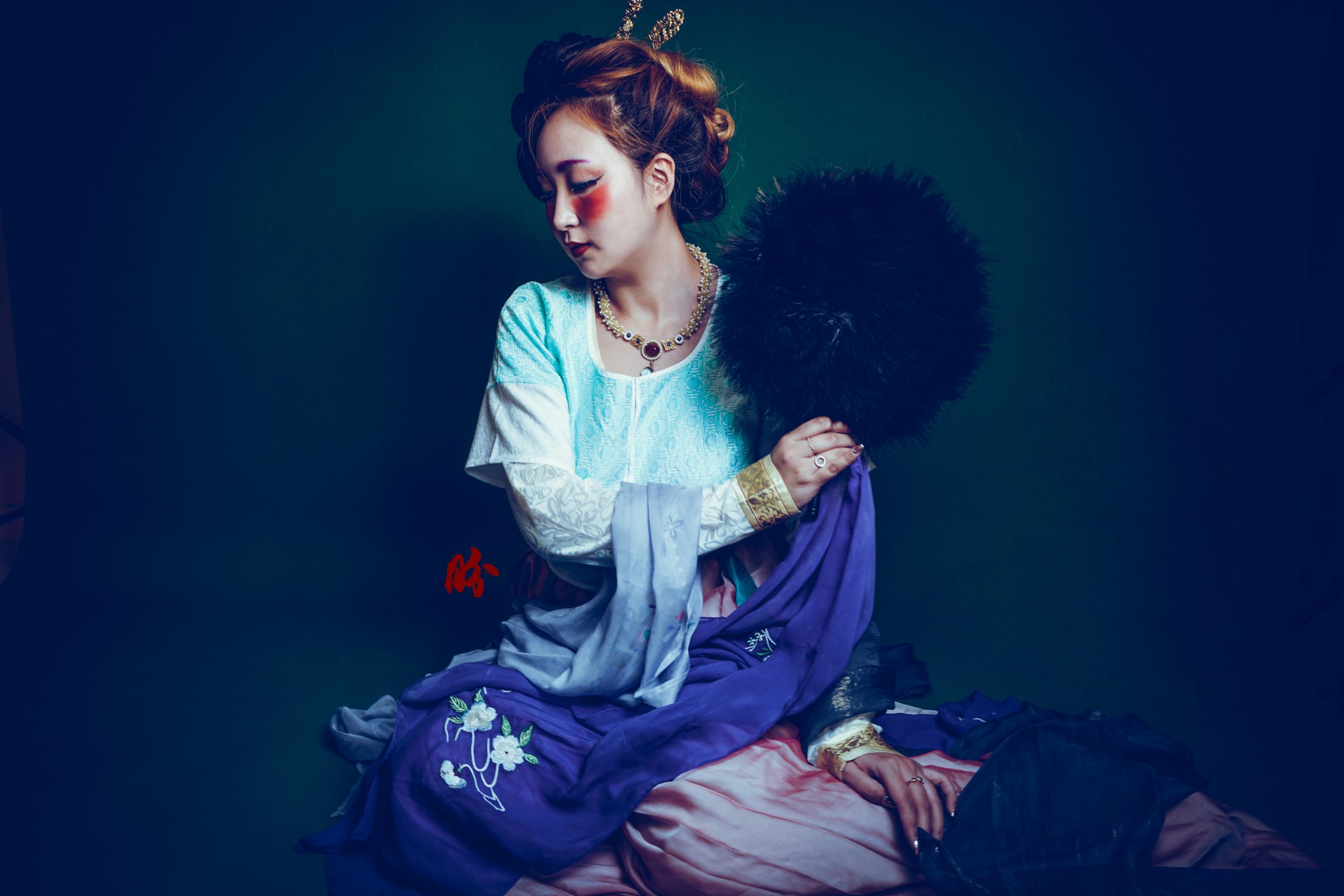
Literally.
It would be white-washing the history of Chinese make-up to believe that everything that’s used on the face was good for you. In fact, similar to the development of make-up in the West, often harmful ingredients from nature were extracted and used in pursuit of beauty, to the detriment of many.
Decided to do a post that touches on the harmful product and also the revolutionarily stunning eyebrows of the past. Reminds me of the theme of an exhibition in the National Museum of Singapore–Danger and Desire. I guess that’s the nature of… nature. dangerous, yet alluring.
I’m going to start talk about unconventional make-up with this particular poem by a famous Tang dynasty poet in the 8th century China (白居易 Bai JuYi, 772-846CE).
Styles of the Times(时世妆)
Styles of the times! Styles of the times!
Emerging from urban centers, are transmitted to the four quadrants.
What’s popular at the moment does not distinguish far from near;
Cheeks don’t show vermillion, faces aren’t powdered.
Dark lipstick emphasises lips, lips seem plastered;
Pairs of eyebrows painted to make a drooping symbol for “eight.”
Beauty and ugliness, black and white, lose their basic attitude;
Makeup completely finished, they look as if suppressing a shriek of lamentation.
Round hair coils without sidekicks: Heaped up chignon-style.
Inclined towards pink, used immoderately: ruddy face powder.
Formerly I heard that hair hanging down the back, along the Yi River,
If you’re unfortunate enough to see it, always signifies western tribes.
These fashions and hairdos of the Primal Harmony period [806-821] you capture in your record:
Hair in heaps and ruddy faces are not Chinese customs!
So, clearly the poet was extremely distressed at the sight of this “Styles of the Moment” makeup. I’ve shared briefly on Instagram that Tang dynasty women were greatly influenced by foreign cultures and that a particular style of makeup by Tibetans made its way into a poem by Bai Juyi. So this is the poem.
I’ve been wanting to reimagine the make-up styles that were so frowned upon by the poet (and probably many likes of him) during that era. It shows how daring and empowered women were in those days, and how open-minded and culturally diverse Tang dynasty was (of course, we must always bear in mind that whenever such claims are made, it usually applies to the capital city area and not the outskirts).
So, presenting my understanding of the portion in red. I’ll come to why the eyebrow’s blue later on. The necklace is what I made based on what’s uncovered from a Sui dynasty princess’ tomb, and one of the hairpieces was based on a Ming dynasty (1368-1644 CE) artefacts.
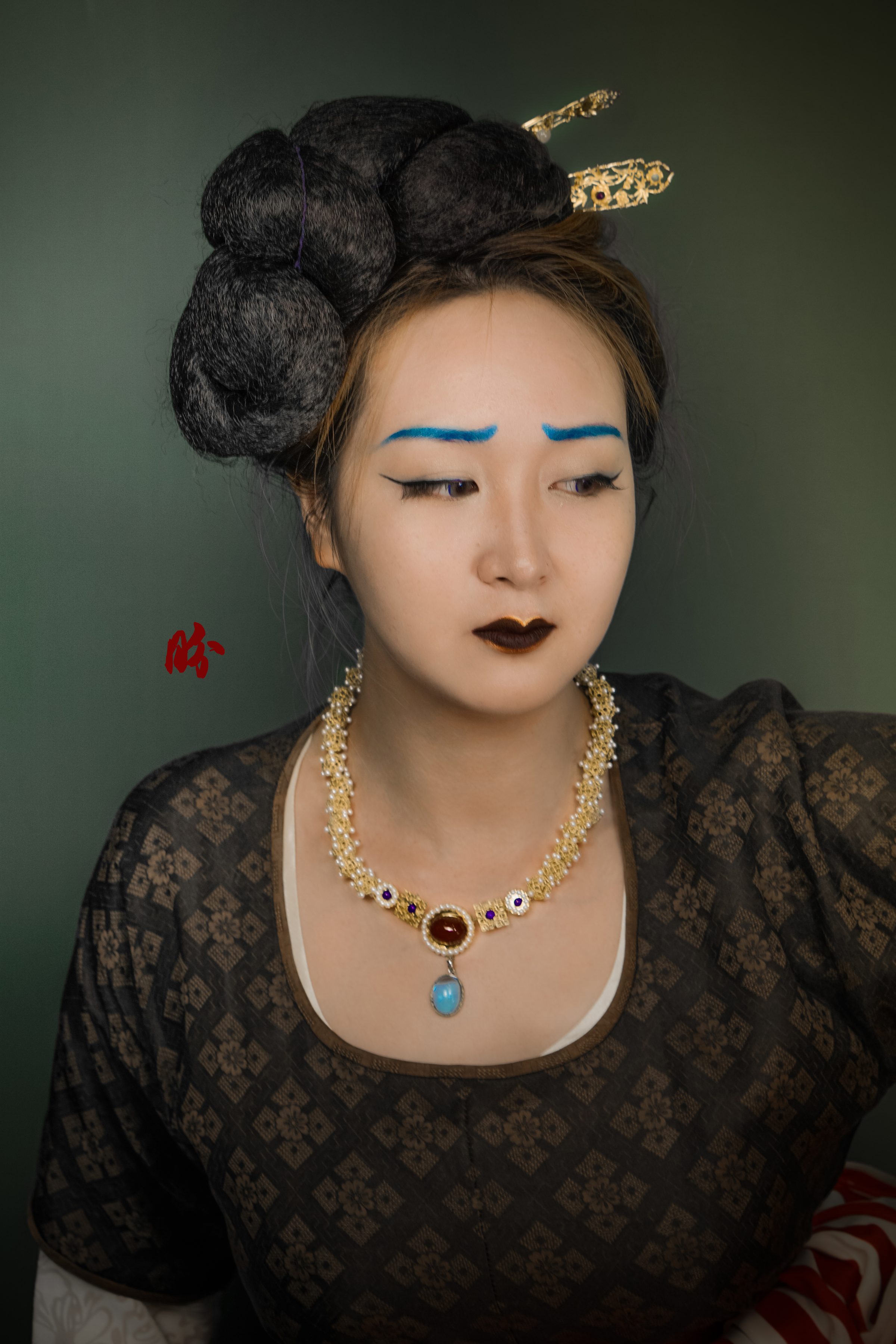
Dark lipstick emphasises lips, lips seem plastered;
Pairs of eyebrows painted to make a drooping symbol for “eight.”
Next-up, is the second make-up described in the green portion.
Here, I’ve used a purplish eyebrow, and I will explain later on as well why. The use of peacock feather fan is to emphasise that exotic foreign factor in Tang dynasty makeup and influence. Influences from India, Tibet, Persia, etc. were all embraced by the trend-setters during that era.

Inclined towards pink, used immoderately: ruddy face powder.
OK, so now the eyebrows. In case you wanna do your own Tang dynasty make-up, you can just pick a few from the chart below:
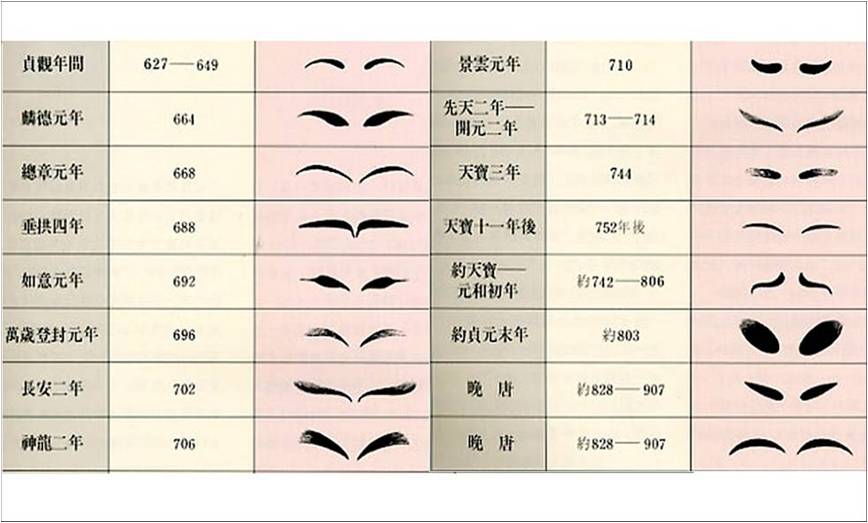
It would be reasonable to assume that the eyebrow that resembles the figure 8 is the one that’s found on artefact from 742-806 CE. Looking at the period when this style of brow was found and the period when Bai Juyi wrote his poem (about half a century apart), it’s safe to deduce that women definitely would exercise flexibility in their styles of make-up. It’s not like a template of style A eyebrow + style B lips + style C makeup palette. They are most likely to be like what we do today–mix and match as we deem fit (intuitively so too)!
The blue/green eyebrow pigment/product is interesting because there’s the “imported” expensive type and the cheaper homemade type. The more expensive one was imported from Persia, and concubines of emperors would fight to use them. The price of the imported product was as high as one single piece for 10+ gold, and in Qing dynasty it soared to as much as 1000+ gold (the past life of bitcoins??😂) . The unit which was used for gold was unknown, but.. probably nothing I could afford anyway.
The cheaper homemade type, was made of oxidised copper. I googled the english term, and the chemical make-up of this byproduct is Verdigris (copper acetone). It was STILL expensive, but not as exorbitant as the imported one. So those not so favoured concubines, would get this product to use instead.
Because I’m hopeless in Chemistry, I’ll just try to explain why copper eyebrow pigment is bad for you. The copper green dissolves in water, but is toxic. If it touched on open cut of your skin, it is likely to infect the skin and cause skin irritation. Long term exposure to this element would cause heavy metal to enter your body and damage your haemoglobin, causing different degrees of anaemia or poisoning. (WOW! but not wow. Cos we still use a fair amount of lead in many modern day cosmetics anyway, especially skin whitening ones).
There is also a saying that the imported ingredient is from a purple flower from the mediterranean area, and the resultant colour was Tyrian purple. Because it’s from a type of sea snail/shellfish, it is thus also known as the Shell Brow Palette. The history of the Tyrian purple is interesting and worth a read in your leisure time as well.
Just to give you an idea of the colours that ancient Chinese women had known to have used for their eyebrows:
Red, yellow, blue, green, purple, black, dark grey.
In fact, the blue/green eyebrow was so prevalent throughout Tang dynasty, that in a record in post-Tang dynasty, it was mentioned that when Yang Guifei (one of the four ancient beauties in Chinese history) was sporting a white face with black eyebrows, everyone found it really avant-garde!
OK, so we’ve settled the blue, green, and purple eyebrow part. In case you need any more convincing, here’s an artefact from Dunhuang caves of a buddhisatva created around the Tang dynasty. Dunhuang was a major stopover/point for traders along the Silk Road, and a place of rich cultural exchange between China and the rest of the world.
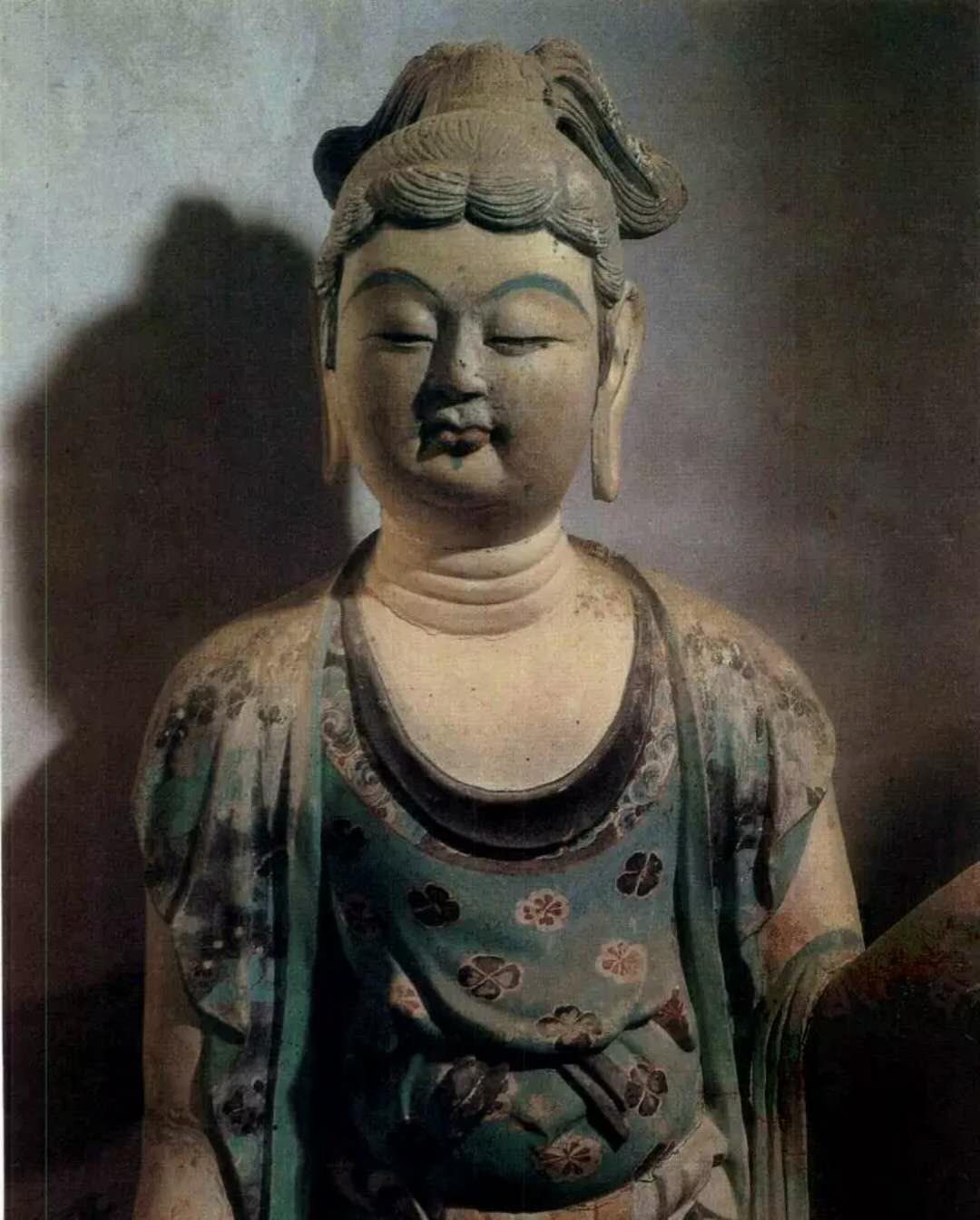
Now, it’s the brick-red blusher, unblended. It’s an influence from the Tibetans. Tibetan men would paint their faces in such colour when going to war, and Tibetan women used to paint this product as well to protect their faces from the sandstorms/harsh weather. I saw pictures of women and men in this kind of make-up from Tibet in the early 20th century, but I think it is no longer popular. Whatever it is, I think Tang dynasty women were the epitome of badasstry!
I mean look at the make-up! Almost-black lips, blue/green/purple eyebrows, brick-red unblended rouge…
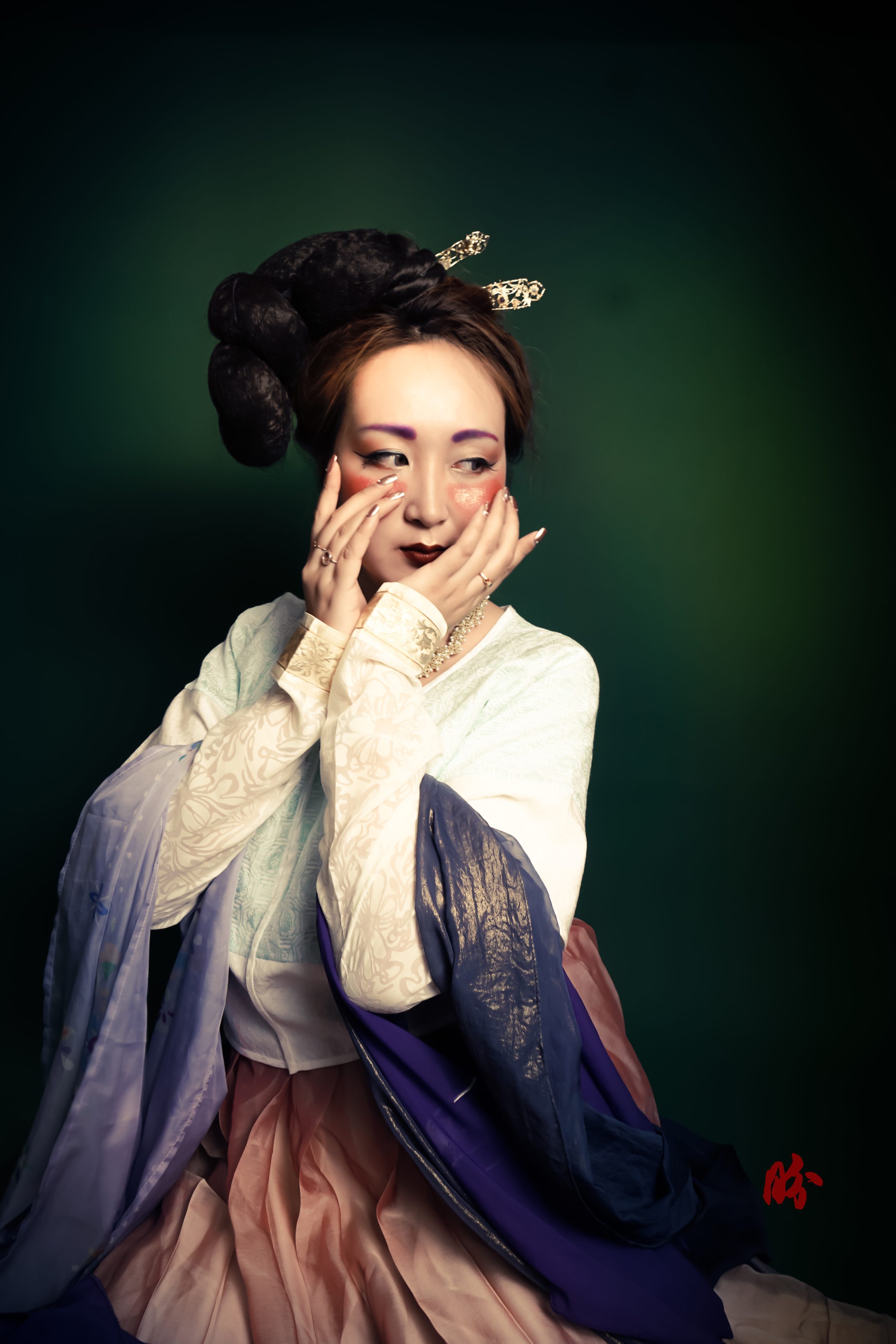
Did I mention, my favourite Tang dynasty model Song Ge shares similar ancestry as the royalty of Tang dynasty (mixed blood of the North-West nomadic tribes and Han Chinese). She’s the real deal. lol. That’s why I love having her model for my plus size Tang dynasty beauty, cos she fits the ideal Tang beauty image. What she’s wearing is a more early Tang dynasty era style, though this make-up is supposed to be mid/late Tang dynasty. I admit that I have exercised quite a bit of artistic liberty in this pairing! 😛
When most articles end with a potato, I’ll end with Song Ge this time round.



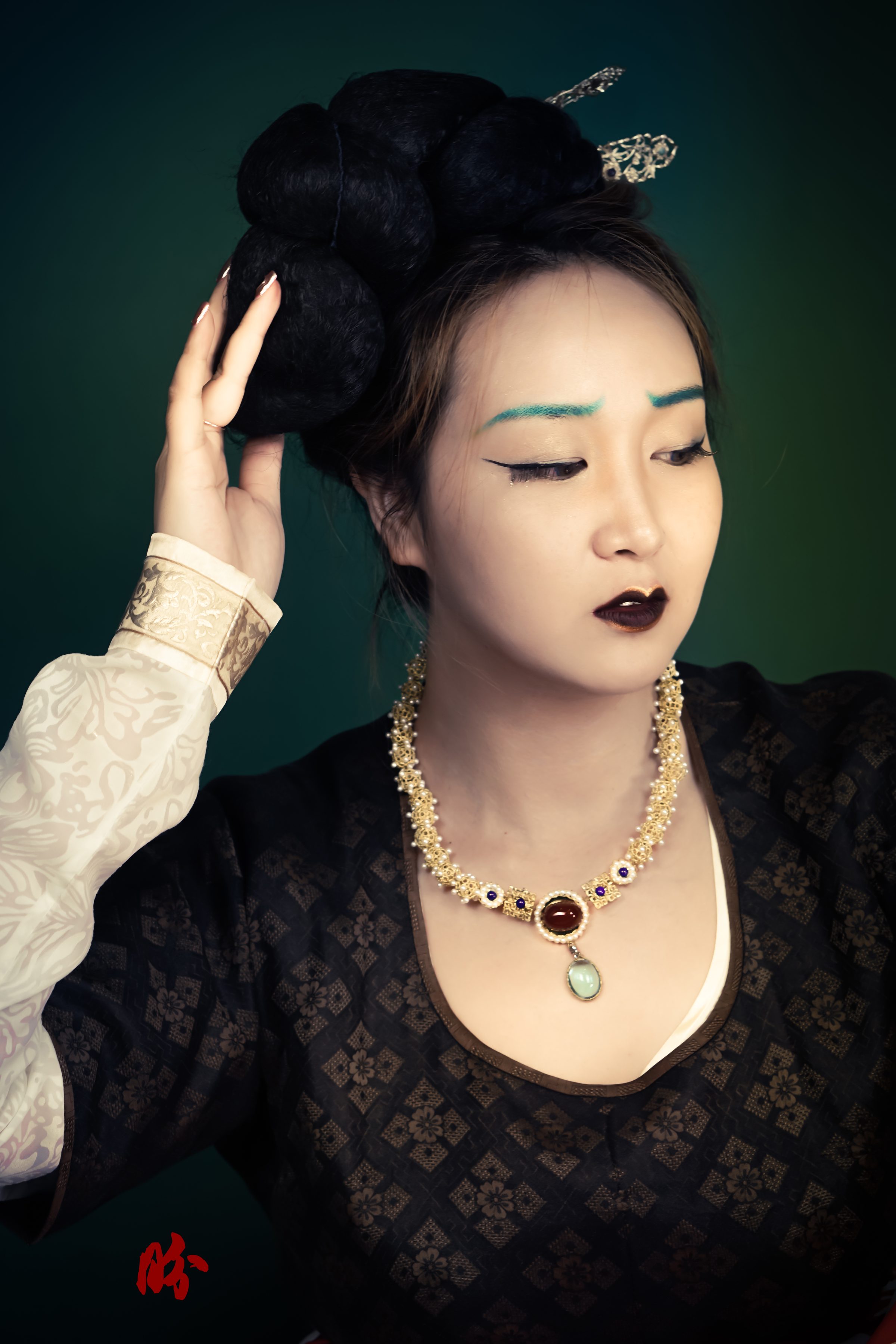



P.S. In case you’re interested.
Original poem and further explanation in Chinese:
时世妆,时世妆,
出自城中传四方。
时世流行无远近,
腮不施朱面无粉。
乌膏注唇唇似泥,
双眉画作八字低。
妍媸黑白失本态,
妆成尽似含悲啼。
圆鬟无鬓堆髻样,
斜红不晕赭面状。
昔闻被发伊川中,
辛有见之知有戎。
元和妆梳君记取,
髻堆面赭非华风。
4 responses to “Ancient beauty brows to die for”

If Bai Juyi lived in our times, he would be lamenting (on Facebook, probably) about the short skirts, skinny jeans, Korean-style brows, dyed hair and such…I bet he never expected his poem to become a historical source for us to know how Tang dynasty women wore their makeup!
By the way, this has to be my favourite post ever!
Hahah Thanks~~~ *hugs* Yea exactly! Who’d have thought that a poetic rant would turn out to be one of the greatest clue to those makeup styles! Hahah If he existed today, he’d be hitting his keyboard really hard and be one of the most known keyboard warriors. lol

These pictures are really great! I wish other hanfu lovers follow the complete look and use the right makeup.
From my research, for other blue options, both ground lapis lazuli and chrysocolla are mentioned in written sources. For grey eyebrows, either galena (imported, sparkly and containing lead) or graphite (dark grey). Ground malachite for the green option. The ‘Persian ink’ was sometimes adultereted with home-grown indigo which was considered inferior to the costly imported stuff. The original ink seems to be a mix of indigo and henna. I made it and it has more of a temporary tattoo effect when tried on a hand. The color is kind of a dirty greyish blue. I have started to believe that wealthy ladies during Tang Dynasty were so bored that they experimented with makeup like modern teenagers. The stranger the look, the better.
Thanks Kasia for the sharing~ Hahah the entire Tang elite circle is probably very much like our top fashion circle, competing on who uses the most expensive ingredients possible (flaunting wealth) and the most unimaginable makeup and hairstyle (flaunting individuality).
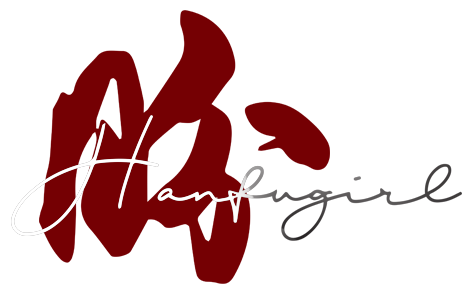
Leave a Reply